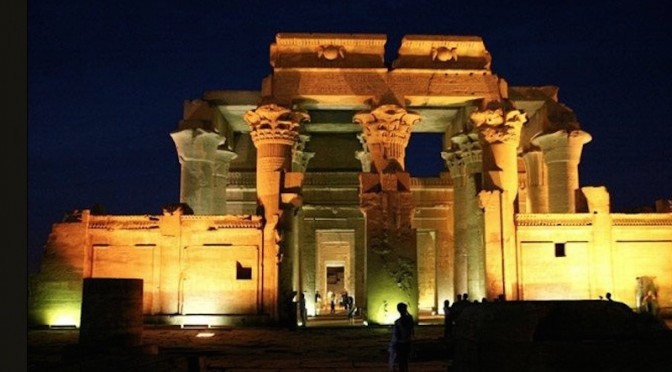Not the old testament
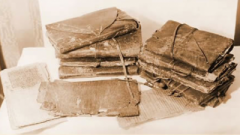 Cathars are taught about the content of the old testament but only to show that the God depicted, Set, and is full of anger, jealousy and retribution.
From the description of the garden of Eden through to the establishment of the state of Israel and Judah, the story is one of unmitigated disaster compounded by jealousy and intolerance, under the guidance (oppression?) of a malevolent God. Jesus message to the Jews and the rest of mankind is that we must abandon all traces of these Jewish beliefs.The Church of Rome places much emphasis and relevance on the Old Testament (the Jewish Torah and associated books -similar in content to the Tanakh) .
Cathars are taught about the content of the old testament but only to show that the God depicted, Set, and is full of anger, jealousy and retribution.
From the description of the garden of Eden through to the establishment of the state of Israel and Judah, the story is one of unmitigated disaster compounded by jealousy and intolerance, under the guidance (oppression?) of a malevolent God. Jesus message to the Jews and the rest of mankind is that we must abandon all traces of these Jewish beliefs.The Church of Rome places much emphasis and relevance on the Old Testament (the Jewish Torah and associated books -similar in content to the Tanakh) .
First there is creation, then dismissal from Eden into the physical world. The reason for dismissal was given as “that they did eat of the tree of knowledge” but both Judaism and the Church of Rome teach that this was a simile for sexual activity. So this dreadful punishment was for experiencing pleasure. a pleasure given us by the Good God.
After several generations of learning about pain and suffering, one of Jacob’s sons, Joseph, was sold into slavery in Egypt and his descendants became Egyptian slaves. Set played a big part in the escape from Egypt. He did a deal with the Isrealites, as they were now called, to worship him above all others in return for escape. Moses was inspired to lead the Israelites out of bondage and received from Set the Ten Commandments. Moses then vanished from the biblical record.
Not all the Israelites believed in Set and he continually vented his anger on those who strayed.
The Israelites settled on the eastern coast of the Mediterranean. After a significant period of time that the kingdom of Israel emerged. The power of the kings of Israel was however balanced by the power of the priests who made sure they followed the will of Set.
After death of Solomon the nation split into the separate nations of Judah and Israel. Judah was conquered by the Babylonians and Israel fell to the Assyrians.
The ten tribes who made up Israel never returned from captivity, but the tribes of Judaea ( Judaea and Benjamin) eventually returned to Jerusalem.
These unfortunate experiences were blamed on marrying gentiles and the subsequent import of false gods. Set, through his prophets played a continuing part in educating the Jews into obedience to his will. He often intervened directly to punish those who would not obey.
Judeans came to believe that if they did obey Set, a great leader would emerge who would conquor the whole world and impose Judaism on all nations.
The were again conquered, this time by the Romans. Romans had a reputation for religious tolerance absorbing the gods of many different cultures into their religious system. They also granted citizenship and even awarded senate seats to those who accepted Roman rule. They were infuriated by the Jews, whose religion was entwined with rampant nationalism.
Cathars are taught about the content of the old testament but only to show that the God depicted, Set, and is full of anger, jealousy and retribution.
From the description of the garden of Eden through to the establishment of the state of Israel and Judah, the story is one of unmitigated disaster compounded by jealousy and intolerance, under the guidance (oppression?) of a malevolent God. Jesus message to the Jews and the rest of mankind is that we must abandon all traces of these Jewish beliefs.
Many attempts were made to wean the Jews away from their worship of Set and the doctrine of separatism. In the end the Romans lost patienece,they expelled all the Jews from their homeland and forbade them to return.
Cathars did however have sympathy for the followers of Set. They believed that by displaying tolerance and consideration and showing the joy of following the Good God both Jews and Members of the Church of Rome would be converted.
Judaism
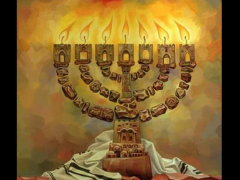 In fact, the Church of Rome preaches the Jewish religion. The sole point of difference is that Church of Rome teaches that Jesus was the Messiah; anointed by God, the King of Israel who will reunite Jewish tribes and usher in the messianic age of peace.In fact, the Church of Rome preaches the Jewish religion. The sole point of difference is that Church of Rome teaches that Jesus was indeed the Messiah; anointed by God, the King of Israel who will reunite Jewish tribes and usher in the messianic age of peace.
In fact, the Church of Rome preaches the Jewish religion. The sole point of difference is that Church of Rome teaches that Jesus was the Messiah; anointed by God, the King of Israel who will reunite Jewish tribes and usher in the messianic age of peace.In fact, the Church of Rome preaches the Jewish religion. The sole point of difference is that Church of Rome teaches that Jesus was indeed the Messiah; anointed by God, the King of Israel who will reunite Jewish tribes and usher in the messianic age of peace.
Jews refute that Jesus was the Messiah, they still await the arrival of the Messiah.
The Church of Rome then went out of it’s way to differentiate itself from Judism.
It entered endless convolutions, first to choose it’s preferred dogma and then to justify that choice. This lead to the almost incomprehensible considerations of the “nature of god” and “virgin birth”, “immaculate conception” and “assumption ( body and soul) into Heaven”.
This convoluted theology/mystology is rejected by Orthodox Jews, as indeed it is by Cathars.
The Messiah
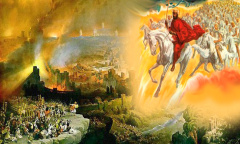 The Jewish faith still waits for a Messiah who will reunite the Jewish peoples and give them victory and dominance in the material world, the devil's world. .The Jewish faith still waits for a Messiah who will reunite the Jewish peoples and give them victory and dominance in the material world, the devil’s world.
The Jewish faith still waits for a Messiah who will reunite the Jewish peoples and give them victory and dominance in the material world, the devil's world. .The Jewish faith still waits for a Messiah who will reunite the Jewish peoples and give them victory and dominance in the material world, the devil’s world.
According to the Jewish faith Jesus did not display a single one of the criteria by which the Messiah can be recognised. The church of Rome thinks that Jesus is the Messiah but that ” the kingdom will not be of this world” That was almost correct but can never be credible while they continue to worship Set.
Cathars believe that the reason Jesus attracted notice was because he was not a carpenters son, as the Church of Rome would have us believe, nor even because he was the rightful King of the Jews but the conjoin of many important blood lines. People listened to him because he was so important. They expected him to rule the whole world and were astonished when he preached a message of rejection of the material world.
Not the new testament
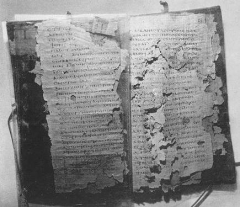 The " New testament" is also abhorrent. One need look no further that the denigration of women found in Paul's writings to reveal that it is an attempt to propagate false teaching.The ” New testament” is also abhorrent. One need look no further that the denigration of women found in Paul’s writings to reveal that it is an attempt to propagate false teaching.
The " New testament" is also abhorrent. One need look no further that the denigration of women found in Paul's writings to reveal that it is an attempt to propagate false teaching.The ” New testament” is also abhorrent. One need look no further that the denigration of women found in Paul’s writings to reveal that it is an attempt to propagate false teaching.
The Church of Rome supplemented the old testament with the new testament which consisted of stories of Jesus’ ministry and the subsequent acts of the apostles. The Church of Rome went one step further it claimed Jesus was God. In fact nearly 400 years later the Curch of Rome decided there were three “consubstantial” Gods. the Father, Son (Jesus) and Holy Ghost. God the father was the creator of the universe but the actual “Father of Jesus” was nominated as the Holy Ghost.
In the eyes of the Church of Rome the Devil is a fallen angel, a creation of the consubstantial Gods dismissed from heaven for disobediance. on death every human will either ascend into heaven and experience perpetual happiness or descend into hell and experience eternal suffering.
This teaching is embedded in the New Testament and is therefore rejected by the Cathars.
Authors Note – Thanks to the activities of the Church of Rome which destroyed most of the Cathar literature no one knows wether there was an alternative testament which was used by the Cathars. The discovery and now the publishing of the Nag Hammadi library,fifty-one alternative christian texts concerned with christian beliefs, raises some interesting possibilities.
Nag Hammadi is perhaps best known for giving us access to the Gospel of Mary,which may be Mary Magdelene’s gospel, which it is different than the established gospels in that it is less of a history and more a treatise on the meaning of Jesus teaching or perhaps her own teaching!
As an example, the work of Valentinus, (100-160), who at one stage was a contender to become Bishop of Rome, was only known because of quotations given by his detractors. Nag Hammadi contains two books which can be attributed to Valentinus – ‘The Gospel of Truth” and ”Valentinian Eposition” .
This discover is exiting because in a gradual process taking 200 hundred years, the Church of Rome limited the approved works to four gospels and the acts of the apostles. They then edited those texts so that they complied with its teaching. All other books dealing with the teaching of Jesus were destroyed. At Nag Hammedi many, but possibly not all of the alternative texts were hidden and saved. The work of Valentinus shows that the Cathar faith may well have been more radical, less “Christian” in its beliefs than has been previously believed.
The Cathar Testament
Ximenes beliefs, which are not necessarily shared by all Cathars, are based on a very different story to the one told by “Orthodox” and “Roman” Christians.
To generalise her beliefs:-
The reason Jesus attracted notice was because he was not a “Carpenters son” but the conjoin of many important blood lines.
What he said was given credibility because he was such an important person, he was heir to the whole known world.
He decided to preach a Messsage of Peace instead of claiming his Earthly Kingdom.
He meant to break away completely from the Old Testament.
His god, the good god was not God the father,but can be identified with Isis or the Sol Invictus Trio of Ra, Mazda and Bel. the is only one God but each person is free to visualise God in different ways.
His death was an illusion, stage managed by the Roman authorities. It either never happened at all or there was trickery to permit him to “resurrect”.
His message was actively promoted by Roman Governments from Tiberius’ through to Constantine.
The same Governments tried to suppress the Church of Rome, the Jewish adaption of Jesus ministry.
Mary Magdelene was a partner as well as an apostle.
Mary Magdelane had dark skin.
Our faith was propagated by Jesus, But Jesus true message was different, radically different to the message delivered by the church of Rome.
